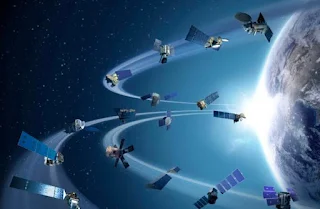How is Starlink changing the global internet connectivity
In the past decade, the world of internet connectivity has grown rapidly - with faster speeds and more reliable connections than ever before. But while this impressive development is something to celebrate, it's not quite enough; there are still millions of people across the globe who don't have access to high speed internet or even basic connection. Enter Starlink: Elon Musk’s ambitious project that aims to provide global coverage of high-speed broadband internet access using a constellation of low Earth orbit satellites. In this blog post, we will look at how Starlink is changing the landscape of global internet connectivity and what it means for those living without access to basic connection.
What is Starlink?
Starlink is a satellite-based broadband Internet service that provides high-speed Internet to users around the world. The service uses a constellation of small satellites in low Earth orbit to provide broadband Internet to users. Starlink is owned and operated by SpaceX, a private spaceflight company founded by Elon Musk.
The Starlink system has been under development since 2015, and the first batch of satellites was launched in 2019. As of January 2021, there are over 1,000 operational Starlink satellites in orbit, with plans to eventually have tens of thousands of satellites in the constellation. The goal of the project is to provide global Internet coverage, including to rural and remote areas that do not have access to traditional broadband infrastructure.
The Starlink system employs a number of novel technologies, including phased array antennas and laser communications, to provide high-speed Internet connectivity. Phased array antennas allow the satellites to focus their signals on specific user terminals on the ground, while laser communications enable data rates of up to 1 Gbps between satellites and user terminals.
The first public beta test of the Starlink service began in October 2020, and as of January 2021 there are over 10,000 users enrolled in the beta test. The service is expected to be commercially available in 2021.
How Starlink is changing global internet connectivity
The global internet connectivity landscape is changing rapidly, and Starlink is leading the charge. Starlink is a new satellite-based internet service that provides high-speed, low-latency internet to users around the world. The service is currently in beta testing, but it has already shown great promise in terms of speed and reliability.
Starlink’s biggest advantage over traditional terrestrial internet services is its global reach. Starlink satellites are deployed in low Earth orbit, meaning that they can provide coverage to anywhere on the planet. This is a major benefit for people in rural or remote areas who have traditionally had poor internet access.
Another advantage of Starlink is its low latency. Latency is the time it takes for data to travel from your device to a server and back again. Satellite-based internet services have traditionally had high latency, which made them unsuitable for activities like online gaming or video conferencing. However, Starlink’s latency is comparable to that of terrestrial broadband services, making it a viable option for these applications.
Finally, Starlink offers high speeds and high reliability. The service has been designed from the ground up to meet the needs of users who require high speeds and low latency. In beta testing, Starlink has consistently delivered speeds of 100Mbps or higher, with plans to eventually offer speeds of up to 1Gbps. The service is also highly reliable, with beta testers reporting few outages or connection issues.
The merits and demerits of Starlink
The pros of Starlink are that it can provide high-speed internet to remote areas, it is more affordable than other options, and it has a low latency. The cons of Starlink are that it is not available in all areas, it requires line of sight to work properly, and there is a risk of interference with other satellite services.
How to get Starlink
In order to get Starlink, you will need to sign up for the service on their website. The service is currently in beta, so there may be a waitlist. Once you have signed up, you will need to purchase a satellite dish and mount it on your property. Starlink will then send you a router that you will need to connect to the satellite dish. After everything is set up, you will be able to access the internet through the Starlink network.
Stalink is an exciting new technology that has the potential to revolutionize global internet connectivity. It promises to provide fast, reliable and affordable access to high-speed broadband services for people all over the world, regardless of their location. Considering its ambitious goals and innovative approach, it is no surprise that SpaceX has already attracted a lot of interest from companies and governments around the world. We look forward to seeing Stalink’s impact on internet access as it continues its rollout in 2020 and beyond.





0 Comments